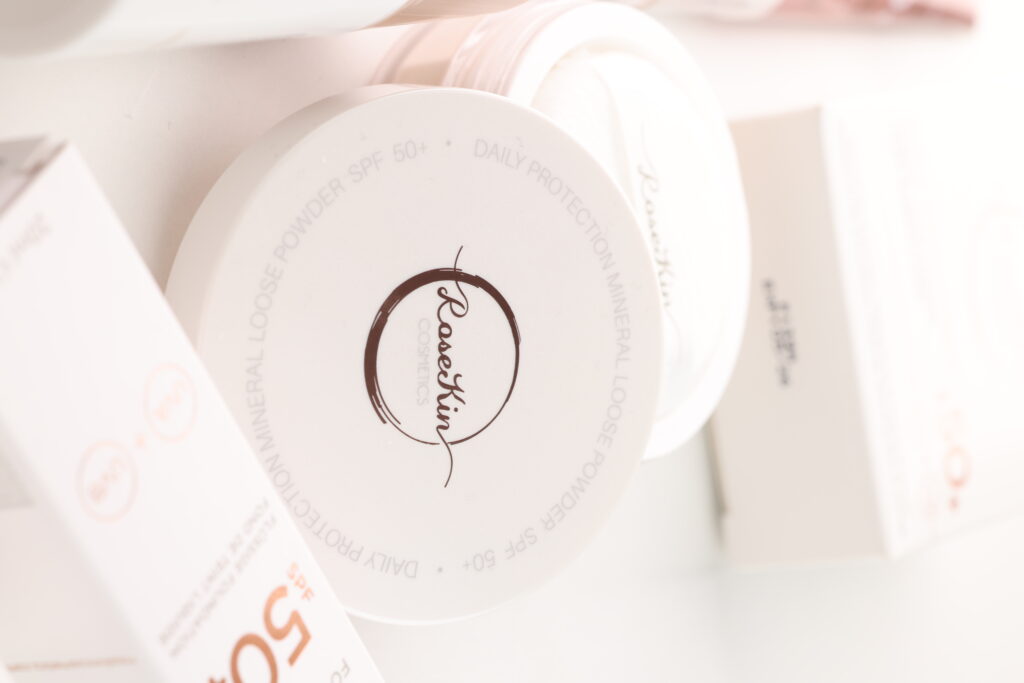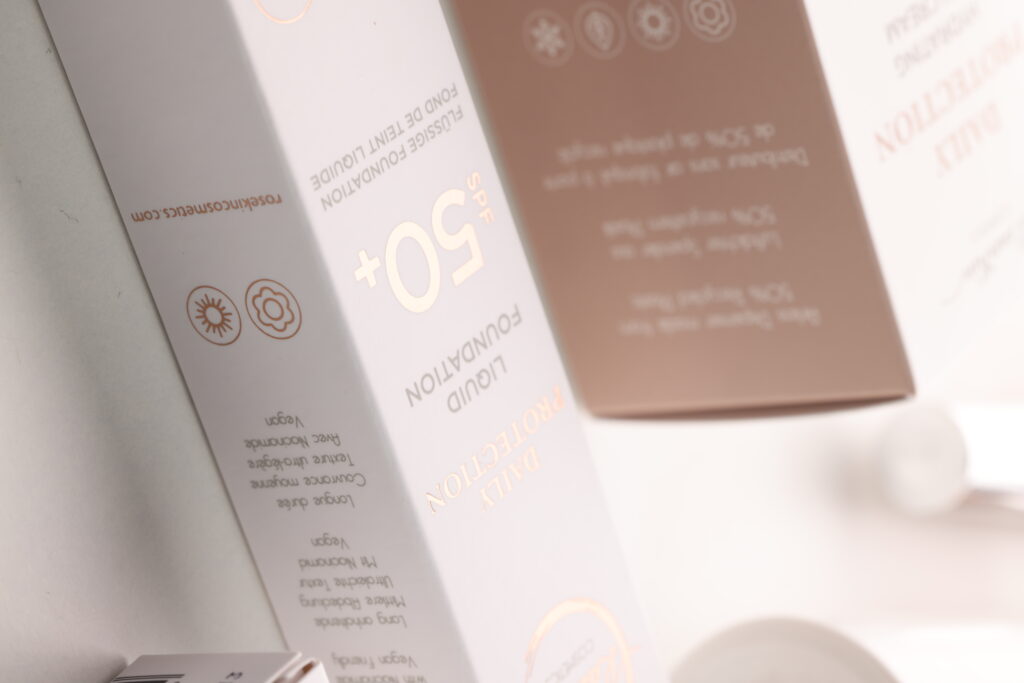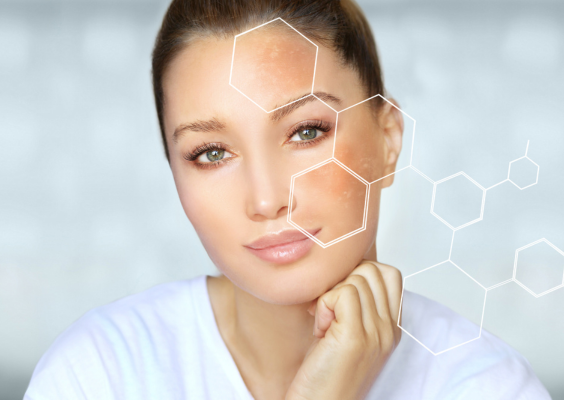Melasma, often referred to as a “pregnancy mask,” is a common skin condition that manifests as brown or gray patches, usually on the face. While medically harmless, melasma can have a significant impact on your self-confidence. If you’re looking for ways to reduce these skin spots and achieve an even complexion, you’ve come to the right place. In this blog post, we’ll delve into what melasma is, explore the causes of this pigmentation issue, and discuss the most effective treatment options. Discover how targeted steps and the right products, such as tinted sunscreen, can help you combat melasma and restore your skin’s glow.
What is Melasma?
Melasma is a form of hyperpigmentation that commonly affects women, particularly during pregnancy, though men can also be affected. The condition typically presents as symmetrical, dark patches on the forehead, cheeks, bridge of the nose, upper lip, and chin. Although melasma most often affects the face, it can also appear on other sun-exposed areas of the body, such as the neck and forearms.
Causes of Melasma
The exact cause of melasma is not fully understood, but several factors contribute to the development of this skin condition:
- Hormonal Changes: Hormonal fluctuations are the primary cause of melasma, which explains why it is so prevalent among pregnant women. This is often due to an increase in the hormone estrogen. The use of birth control pills and hormone therapy can also trigger melasma.
- Sun Exposure: Sun exposure plays a crucial role in the development and exacerbation of melasma in all skin types. UV radiation from the sun stimulates melanocytes, the cells responsible for producing melanin, the pigment that gives skin its color. When the skin is exposed to sunlight, melanocytes increase their activity to protect the skin from UV damage, resulting in more pigment formation. This process is a natural defense mechanism, but in people with melasma, it leads to uneven, dark spots. Not only people with darker skin types are prone to melasma; those with lighter skin can also develop the condition. Although their melanocytes are less active compared to those with darker skin, repeated or intense sun exposure can still lead to overproduction of melanin, resulting in melasma. Additionally, exposure to visible light (such as blue light from digital screens) also plays a role in worsening melasma, regardless of skin color. Therefore, it is essential for everyone, regardless of skin type, to use sunscreen and limit sun exposure.


3. Genetic Predisposition: There seems to be a hereditary component to melasma. If you have family members with melasma, you are more likely to develop it as well.
4. Use of Certain Cosmetics: Some cosmetic products can irritate the skin and worsen melasma, especially if they contain ingredients that make the skin more sensitive to sunlight.
Who is More Prone to Melasma?
Melasma can affect anyone, regardless of skin color or background, although certain factors can increase the risk. For instance, melasma is more common among certain groups due to hormonal and genetic factors. Women are significantly more susceptible than men, especially during pregnancy, earning melasma the nickname “pregnancy mask.” Additionally, people with darker skin tones, such as those of Asian, Latin American, or Mediterranean descent, are more susceptible because their skin contains more melanin, leading to increased pigment production. Regular sun exposure, especially without adequate sun protection, also increases the likelihood of melasma. A family history of melasma can also increase your risk of developing the condition.
Treatment Options for Melasma
Melasma can be a persistent and chronic condition, but several treatment options are available to help reduce symptoms. The effectiveness of these treatments varies from person to person, and the duration of treatment can be lengthy. Here are some common approaches:
- Sun Protection: Daily use of a broad-spectrum sunscreen with a high SPF is essential. Sun protection prevents further pigmentation and can help reduce existing discoloration. Tinted sunscreens offer additional benefits by blocking visible light, which can be particularly useful for melasma. More about this will be covered later in the blogpost.
- Chemical Peels: Treatments with mild acids, such as glycolic acid or salicylic acid, exfoliate the top layers of skin and help fade dark spots. These peels must be performed carefully to avoid making the skin overly sensitive to sunlight.
- Laser Therapy: Lasers can be effective in treating melasma by targeting pigmentation in the skin. However, there is a risk that pigmentation may worsen. Laser therapy is often recommended only when other treatments have been unsuccessful.
- Microneedling: This technique stimulates collagen production by puncturing the skin with tiny needles. It can help reduce pigmentation, especially when combined with topical treatments. Each treatment option has its own advantages and disadvantages, and what works for one person may not work for another. It is important to develop a personalized treatment plan with a dermatologist based on your skin’s specific characteristics and the severity of your melasma.

Unlock the Power of Tinted Sunscreens
An emerging and effective treatment option is the use of tinted sunscreens. Tinted sunscreens are gaining popularity due to their dual protection. These mineral sunscreen formulas include an additional color base that not only helps to even out skin tone but also blocks visible light, which can be beneficial for certain skin issues. Visible light, emitted by both the sun and artificial sources such as screens and lamps, penetrates deeper into the skin than UV radiation and can contribute to conditions like melasma and post-inflammatory hyperpigmentation. Studies show that visible light can exacerbate these pigmentation issues, especially blue light from digital screens. Therefore, it is important to use sunscreens that also block this type of light. Tinted sunscreens combine broad-spectrum UV filters with pigments such as iron oxides, which even out skin tone while blocking visible light. These products can effectively help reduce hyperpigmentation and prevent melasma flare-ups. When choosing a tinted sunscreen, look for the presence of iron oxide in the ingredient list for optimal protection and skincare. Our RoseKin Cosmetics products are perfectly suited to this need. We offer a carefully selected range of tinted sunscreens that not only protect against harmful UV and visible rays but are also enriched with ingredients that nourish the skin and even out the complexion. Whether you’re looking for a lightweight formula for daily use or a more powerful option for intense protection, our tinted sunscreens provide the ideal combination of protection and care tailored to your specific skin needs.
Source



Conclusion
Melasma can be a persistent and sometimes frustrating skin condition, but with the right approach and treatments, it is possible to reduce symptoms and even out the skin tone. It is important to be patient and understand that visible results typically take time. Always consult a dermatologist for a customized treatment plan that suits your skin type and the severity of the condition. Remember, sun protection is the cornerstone of any effective melasma treatment.

